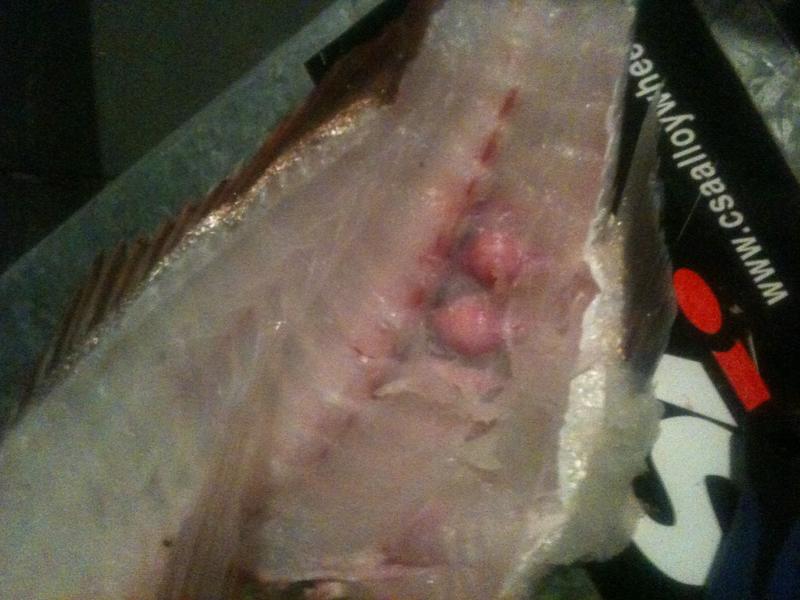does anyone know what these are?
Submitted by sammy85 on Wed, 2011-08-10 15:39
when i was filleting a pinkie my brother caught on sunday off rotto i found these two hard ball things near the spine and have never seen anything like it before and was wondering if anyone knows what they are? any info much appreciated thanks sammy.
____________________________________________________________________________
Plumber and gas fitter- 0415489103





snappermiles
Posts: 2100
Date Joined: 05/11/10
not sure what they are some type of mutation
but plenty of snapper have them!!i only seen a few of them years back but they are getting more common these days
ALL FISHERMEN ARE LIARS EXCEPT YOU AND ME! AND IM NOT SO SURE ABOUT YOU!
scotto
Posts: 2472
Date Joined: 21/04/08
Not sure what they are,
But nearly every (if not all) snapper I've filleted has them, and the bigger snapper have the bigger ones.
carnarvonite
Posts: 8673
Date Joined: 24/07/07
Broken bones
Could be where they've had a broken bone and the callus forms around the break before it heals.
Have seen it in most other fish as well, not just pinkies.
crasny1
Posts: 7006
Date Joined: 16/10/08
In humans it is called Bony Exostosis
In fish they are similar. Googling Exostosis snapper I found this:
"fish hyperostoses. They are not uncommon in older specimens of the snapper Sparus auratus and are also reported in 92 other species of marine bony fish in 22 families. Hyperostoses take the form of regular, cellular swellings in otherwise thin, acellular bone, such as vertebral spines or the thin bones of the skull. In each species they generally occur in the same specific places.The Australian old-man snapper that the questioner enjoyed so much is characterised by a bony knob or casque on the back of the skull, which is another example of hyperostosis. Fish hyperostoses also occur as fossils (sometimes called fossil brains by collectors), and have been the subject of research for a long time. They are often known as "Tilly bones" by palaeontologists, after the palaeoneurologist Tilly Edinger (1897-1967), who made them a special interest.Hyperostoses do not seem to inconvenience the fish and are apparently not pathological, but their purpose is uncertain. However, because they occur only in tropical and subtropical marine fish (plus a few temperate species such as the snapper), and a couple of species of freshwater fish in hypersaline environments, it is thought that they may play some part in calcium regulation.Neville Pledge, South Australian Museum, Adelaide, Australia"
Breaking some scientific words down: Hyper = over or bigger, -ostosis = pertaining to bone, a problem or pathology.
Hope that helps. Out of interest surfers or swimmers in cold water get a similar problem in their ears called surfers ear.
Neels
"I would like to die on Mars. Just not on impact!!" _ Elon Musk
Peter73
Posts: 62
Date Joined: 28/05/11
Intresting , wondering what
Intresting , wondering what they where last i caught a decent snapper .
bouttime
Posts: 703
Date Joined: 27/07/06
Of all the snapper I have
Of all the snapper I have caught in SA over the past 3 years almost all over about 4kg have the same thing. Some 1 some 2 or 3.Makes no difference to the quality of the fish. Some of the fish over 10kg have them the size of golf balls.